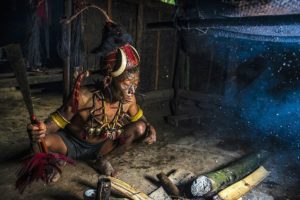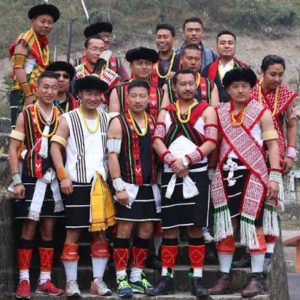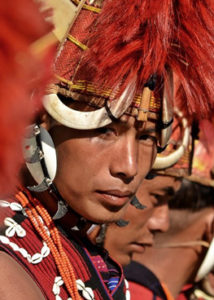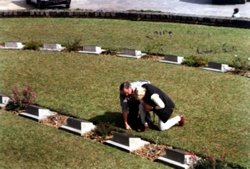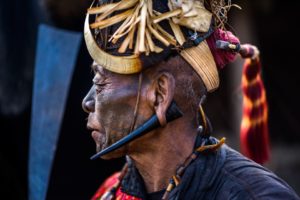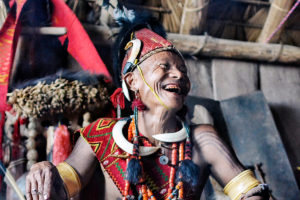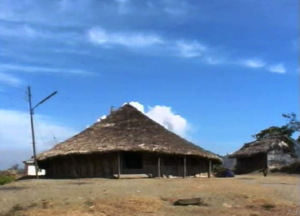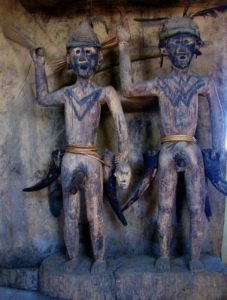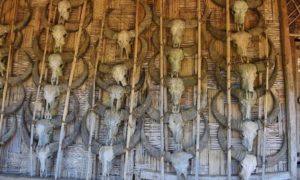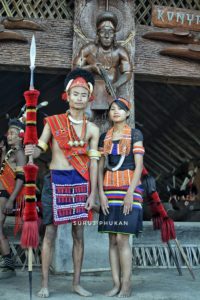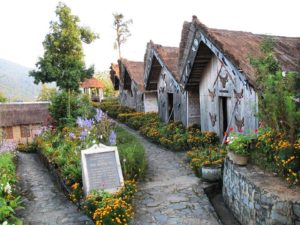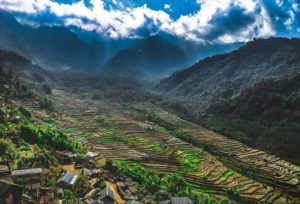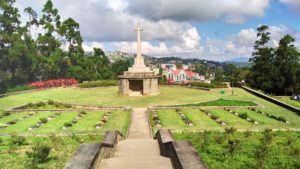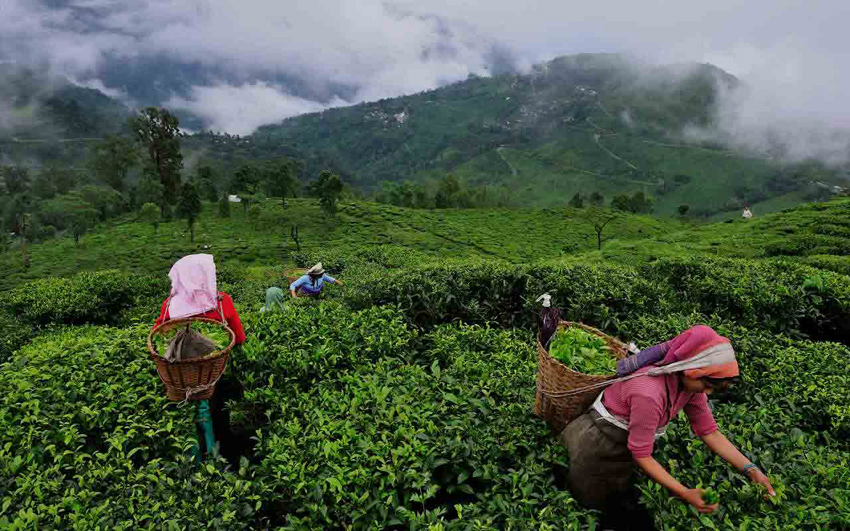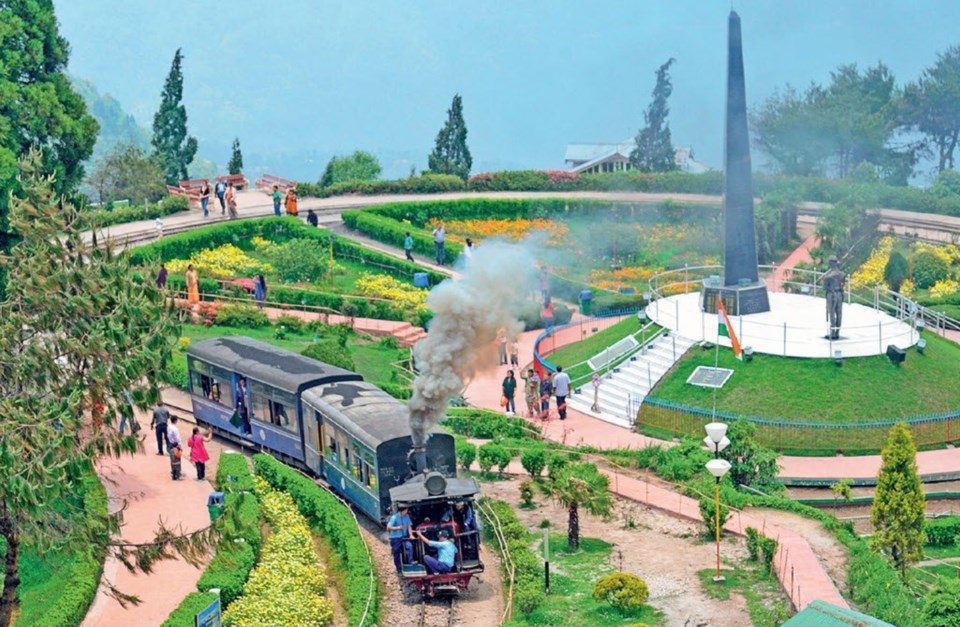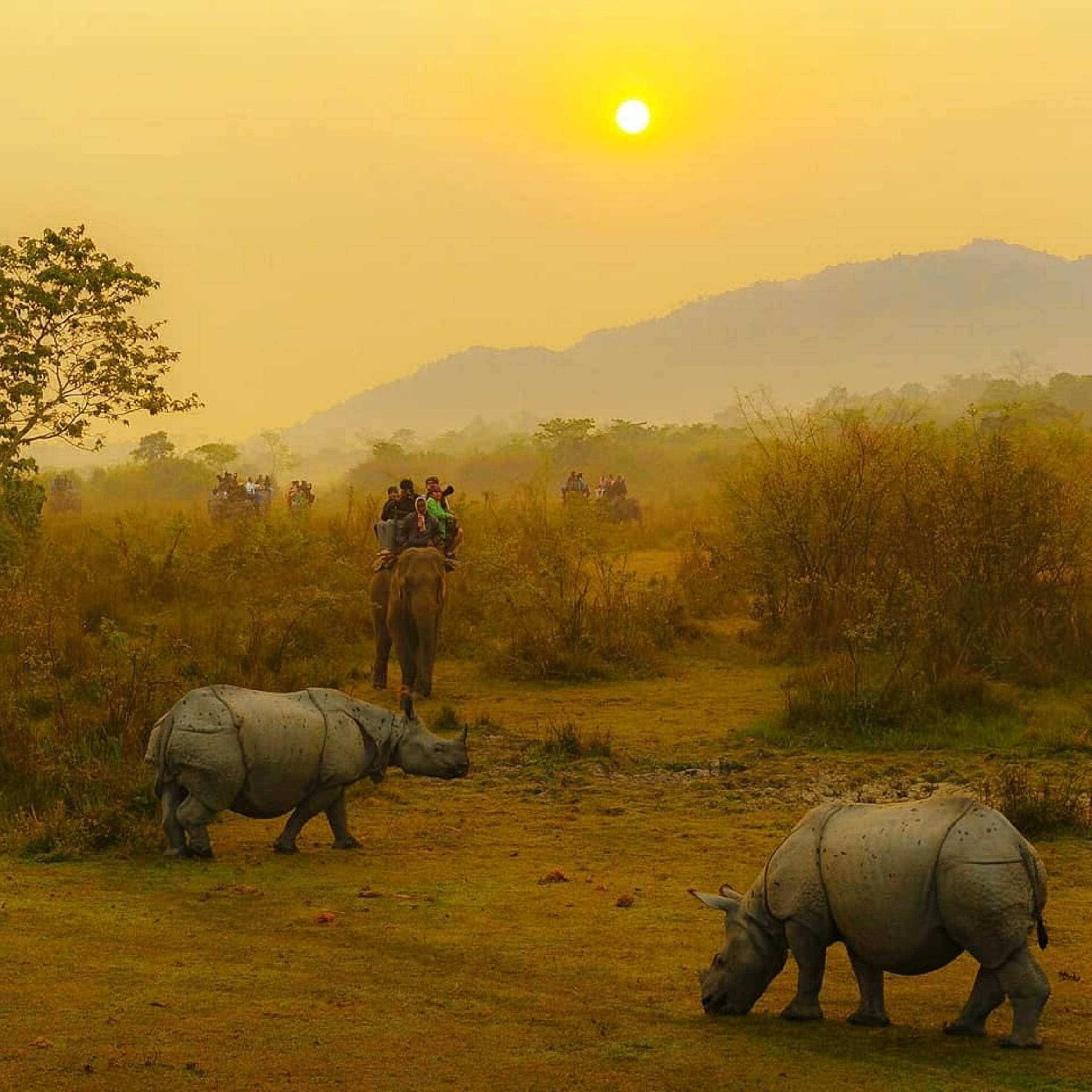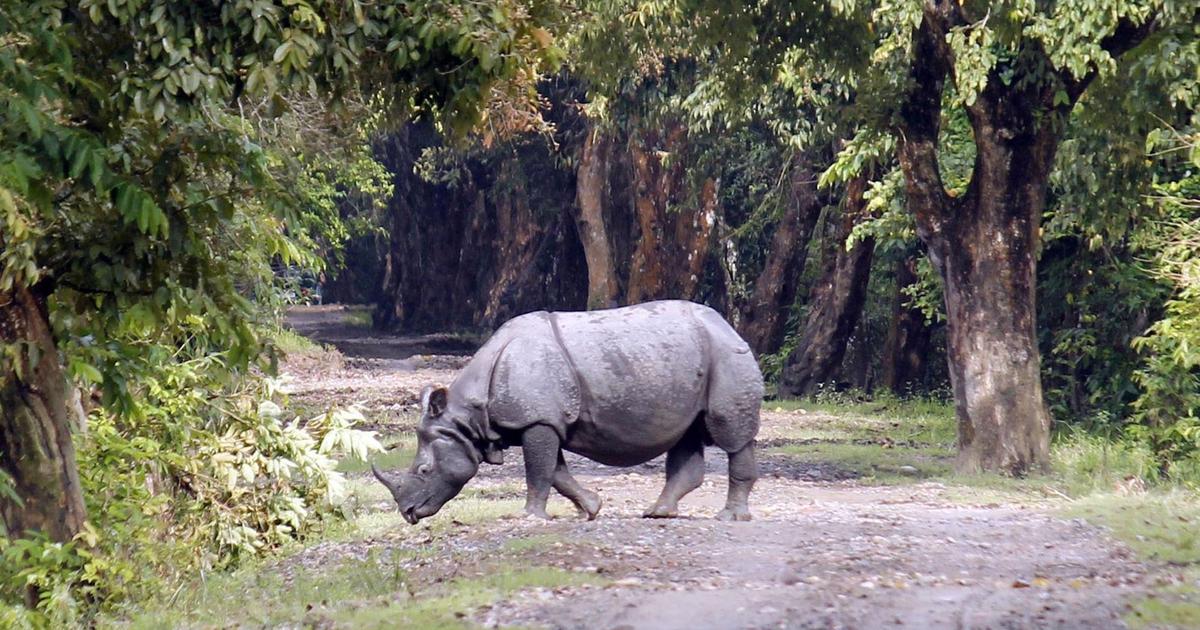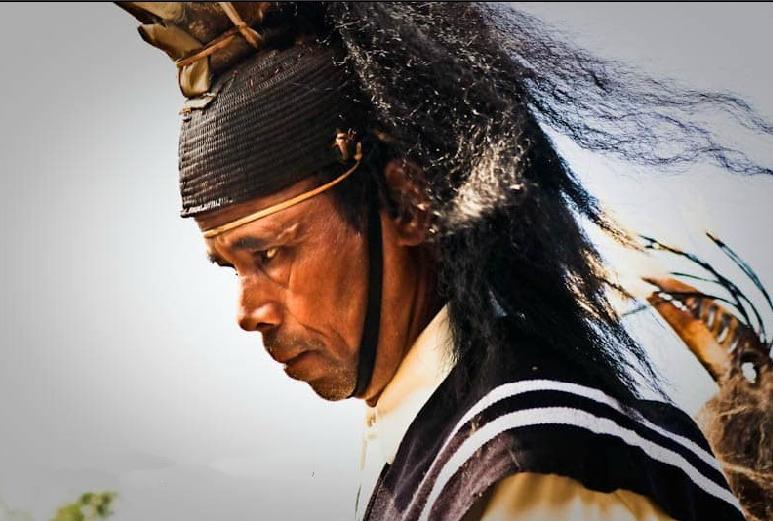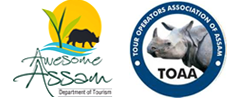Tour Highlight
NAGALAND TOUR
COME WITH US FOR AN ENCHANTING EXPERIENCE OF NAGALAND. ONCE THE LAND OF HEAD HUNTERS.
- Konyak warrior in Longwa Village
Embark upon a thrilling journey to Longwa where spotting the last of the tattooed hunters is an underlying possibility.
- Young Angami Naga Tribesmen
Visit Mokokchung, the quaint little town is also known as the ‘Cultural Capital of Nagaland’.
- Hornbill Festival at Kisama
A visit to Kisama or the Naga Heritage Village will give you the chance to witness as well as experience the Naga traditions and cultures.
- European couple paying tribute at Kohima War Cemetary
On your visit to Nagaland, pay your homage to the World War II martyrs. Fought between the British and Japanese soldiers, the cemetery serves as the resting ground for both the British and Japanese soldiers.
Itineraries
NAGALAND TRIBAL TOUR
Day 01 of Nagaland tour: Arr. Dibrugarh by flight
Meeting upon arrival and transfer to hotel.
Evening free at leisure.
Overnight at hotel.
Day 02 of Nagaland trip: Dibrugarh / Mon (210 Kms, 5 hrs drive with stop)
Morning after breakfast depart by car for Mon. En route stop at Moran for lunch.
Arrive at Mon and check in at hotel.
- Konyak Warrior
Mon: Situated at an altitude of 897.64 meters it is the land of the Konyaks (One of the fiercest tribes in the world). Even though there is a legal administrative system, but actually it is ruled by tribal chiefs called Anghs (locally known as ‘Wang’ meaning the beginning of everything). Mon is the only district in Nagaland to have this unique institution of Anghship. The word of his is law in these parts. His succession is hereditary in nature. The Konyaks believe that they were direct descendants of Noah, for they have Biblical names like Mosa, Kaisa, Aron and so on. The konyaks are famous for their tattooed faces , blackened teeth and barbaric practice of Headhunting
Overnight at hotel in Mon.
Day 03 of Nagaland tour: Mon / Chui / Longwa / Mon
Early morning to Chui village.
Chui village: Located about 8 kms away from Mon town on the Tuensang – Mon road Chui village still preserves its old charm. One can see the Konyak traditional houses built with palm leaves roofing with protruding out the main pillars. Chui is also famous for ethnic craftsmanship. The skill of the villagers is not confined only on bamboo and woodworks but they are prowess in gun and gunpowder making.
Later return to Mon and after having breakfast full day excursion for Longwa, which is 42 Kms from Mon. (3 hrs drive)
En route stop at the bank of river Tapi / Taphi and have the packed lunch.
- Konyak Tribesman
Longwa Regarded as one of the biggest villages in Mon the unique feature of Longwa is it shares the international boundary of Myanmar and India (Half of the chief Angh’s house falls in the Indian side and the other half falls in Myanmar). The Angh takes his food in India and sleeps in Myanmar’s territory. Even though there is a village council to administers the village, the Angh’s word is conclusive.
- Angh’s Home at Longwa
Later pay a visit to a Konyak house to witness the traditional culture.
Overnight at hotel in Mon.
Day 04 of Nagaland tour: Mon (42 Kms, 3 hrs drive with stop)
Morning after breakfast visit
- Traditional Konyak House
Mon village which is 7 Kms from Mon town. In the village you can meet the King. He ruled 12 villages – Tanhai, Pongkonmg, Longkei, Leangnyu, Hongphoi, L/Shanghah, Phuktong, Oting, Tumei, Lapa, Upper Tiru and Lower Tiru.
Also visit the Morung where the village youths are being taught about the way of manly hood.
- Woodcarving at Shangnyu Village
Shanghnyu: Regarded As One Of The Most Prestigious Village In Mon District, Shangnyu Shares The Unique Feature Of Mon – The Anghship. The Main Attraction Of The Village Is The Piece Of Woodcarving Placed At The Entrance Of The Angh’s Residence. The Woodcarving Is 8 Feet In Height And 12 Feet In Breadth. People Believe That It Had Been Constructed By Two Brothers With The Help Of An Angel.
- Mithun’ skulls at the Angh’s house in Sheanghah Chingnyu village
Sheanghah Chingnyu Village.This village has the Biggest Traditional Ang house and maximum skull of Animals collected during headhunting time.
Evening free at leisure.
Overnight at hotel.
Day 05 of Nagaland tribal tour: Mon / Tuensang (175 Kms, 5 hrs drive)
Morning after breakfast departs for Tuensang. On the way you can have a glimps of Veda Peak which is the highest in the district.
Arrive Tuensang and check in at the Govt. guest house.
Tuensang is inhabited by five major Naga tribes – Chang, Sangtam, Khiamniungan, Yimchunger, Phom and a part of Sumi. The district shares its border with Myanmar. It is the biggest district in Nagaland covering 25 % of the total area. Christianity is the main religion but they still believe the traditional practice of their old forgotten days.
Evening free at leisure.
Overnight at the guest house.
Day 06 of Nagaland trip: Tuensang / Mokokchung (97 Kms)
Morning after breakfast visit the Tuensang village.
Tuensang village has its own old world charm and here one can get a glimps of the cultural tradition of the Chang. Pay a visit to a Chang house and witness the manufacturing of the traditional handicrafts items.
Afternoon departs for Mokokchung
- Naga Couple in their traditional attire
Mokokchung: Situated at an altitude of 4347 feet, Mokokchung is the home of the Ao Naga tribe. According to the legends the Aos sprung up from “Longtrok” which means “six stones”. In the past, Mokokchung was one of the preliminary locations in the Naga Hills, where the British had established their presence in the late 19th century. Later on, arrival of Christian missionaries to Mokokchung had brought a different image in the field of education and today it is having the highest literacy in the state with an average literacy rate of 84 %.
Arrive Mokokchung and drive to the beautiful modern village of Mopungchuket and check in at the small but beautiful lodge constructed and maintained by the village youth of Mopungchuket.
Evening free at leisure.
Dinner and overnight at hotel.
Day 07 of Nagaland tour: Mokokchung / Touphema (119 Kms, 4 – 4 ½ hrs drive)
Morning after breakfast visit:
Mopungchuket Village: 20 kilometers from Mokokchung, Mopungchuket is a modern village and the center of missionary activities. The village is famous for the two lovers Jina and Itiben. A library cum museum has been constructed and maintained by the village youth which is having a good collection of books regarding the history and the culture of the Nagas. Some efforts have been taken to construct the Morungs, (Bachelor’s dormitory) carve the Time Pillar and to preserve some artifacts in the village museum.
Longkhum village: Situated at an altitude of 1846 meters Longkhum village is a forefront village with a primitive history of headhunting. The Aos believe that Longkhum is the resting place of the dead spirit onward journey to the heaven. Few people of this village still believe in the animistic religion and still worship their god “Longlanpa Tsungrem”. The villagers are very friendly in nature and they feel proud to showcase their rich handicrafts and handlooms to the visitors.
Later drive to Touphema Tourist Village. En route visit Wokha, the Lotha and Angami tribe belt.
- Touphema
Touphema Tourist Village: Lying between Mokokchung and Kohima highway Touphema is a unique village resort in the midst of blue hills. It is a good example of eco and rural tourism where one can experience modern and hygienic accommodations in the traditional huts in an ethnic setting. The local villagers show cases their culture through traditional dances and ethnic foods including rice beer.
Evening free at leisure.
Overnight in the traditionally built cottages.
Day 08 of Nagaland Tribal Tour: Touphema / Khonoma (65 Kms, 1 ½ hrs drive)
Morning after breakfast witness the traditional cultural show performed by local tribal people.
Later depart for the Khonoma Green Village.
- Khonoma Green Village
Khonoma Green Village: Located 21 kms away from Kohima town the Khonoma village is the first “green village” of Nagaland. The village is well known for the legendary leader Angami Zapu Phizo who was the founder of the Naga movement. It is in this place where the Naga warriors made their last endeavor against the British aggression in 1879. ‘Khonoma Nature Conservation and Tragopan Sanctuary’ (KNCTS) was initiated to create the environmental awareness among the inhabitants and reserved about 70 sq km of its village forest. The village is also famous for the fallow management of its alder trees which balances nature in the surrounding areas.
Arrive Khonoma and stay in a beautiful homestay, situated in the midst of pine trees.
Evening free to enjoy a nature walk.
Overnight at homestay.
Day 09 of Nagaland trip: Khonoma / Kohima (18 Kms, ½ hrs drive)
Morning after breakfast depart for Kohima.
Kohima: Kohima is derived from the word “Kew Hi Ma” which means the men of the land where the flower Kew Hi grows. Situated at an altitude of 1444 m above sea level, Kohima is the Capital of Nagaland. Like other Naga settlement Kohima shares the same feature standing on top of the surrounding mountains. In true sense, fusion of different culture with a blend of modernasim turns Kohima to a fast growing city.
Arrive Kohima and check in at hotel.
Later visit:
The Kohima War Cemetary:
- The Kohima War Cemetery
“When You Go Home, Tell Them Of Us And Say, For Your Tomorrow, We Gave Our Today”
Constructed in the memory of the officers and soldiers who made supreme sacrifices during World War II, the war cemetery attracts hundreds of visitors every year including the relatives of those martyrs. Maintained by the Commonwealth War Graves Commission, the cemetery witnessed more than 2000 graves, on each grave there are beautiful epitaphs carved in bronze.
Kohima village: Popularly known as Bara Basti (Big Village) the Kohima village is one of the largest village in Asia. Inhabited mainly by the Angami tribes it is divided into ‘khels’ or localities. A large traditional wooden gate welcomes you to the village which is elaborately carved with warriors and weapons and the skull of the mithun, a symbol of prosperity.
- Kisama Village
Kisama Village: Kisama is 12km from Kohima on the National Highway number 39. The gentle slope at the base of a steep mountain peak is the venue for the famed Hornbill Festival.The Heritage Villages is designed in the form of an ancient Naga village to give an authentic feel of a true Naga village and the experience of traveling back in time. After converting into Christians, Nagas have abandoned most of their tribal culture and traditions. It is only recently that they are trying to revive their past.
Evening free at leisure.
Overnight at hotel.
Day 10 of Nagaland tour: Kohima / Dimapur (78 Kms 1 ½ hrs drive)
Morning after breakfast drive to Dimapur.
Dimapur: The economy capital of Nagaland , Dimapur was once the capital of the Kachari kingdom. The name itself derived from the Kachari dialect; ‘di’ meaning river, ‘ma’ meaning great and ‘pur’ meaning city.The History of Dimapur dated back to the age of Mahabharata, where the second Pandava, Bheema while in exile, tied the weeding knot with the Kachari princess Hidimba. Thus the place became known as Hidimbapur. It was during the British that it had got the present name Dimapur. It is a cosmopolitan town comprising Nagas, Assamese, Bengalis, Biharis etc developing in the bank of Dhansiri river. Dimapur is having the only airport in Nagaland and is well connected with the rest of the country.
Arrive Dimapur and check in at hotel.
Afternoon visit:
Ruins of Kachari Kingdom: Dimapur was the ancient Capital of the Kachari dynasty whose rule existed before 13th century AD. The ruins of Kachari dynasty which scattered all over the town is an evidence of a flourishing civilization and had a touch of Hinduism but were predominantly non-Aryan.
Dimapur Market: One of the landmark of the town is the famous market near the railway station where one can buy the goods imported from Myanmar and China.
Overnight at hotel.
Day 11 Last day of Nagaland tour: Dimapur depart
Morning after breakfast in time transfer to airport / railway station for the onward destination.
Tour ends.
Inclusion and Exclusion
THE PACKAGE COST INCLUDES:
- All transport by a dedicated vehicle
- Accommodation for ten nights.
- Daily breakfast at hotel.
- Permits required for entering into Nagaland (required only for Indian Nationals)
- All parking, toll charges, driver’s allowances etc.
- 5 % GST as applicable
THE PACKAGE COST DOES NOT INCLUDE:
- Any meals other than mentioned above.
- Entrances to the monuments, parks other than mentioned above.
- Charges of the accompanying guide or local guide (if required)
- Any expenses occur due to natural calamities or which are not mentioned in the cost inclusions
- Any other expenses of personal nature i.e camera, laundry, telephone, any type of insurances, tips, portages etc.




